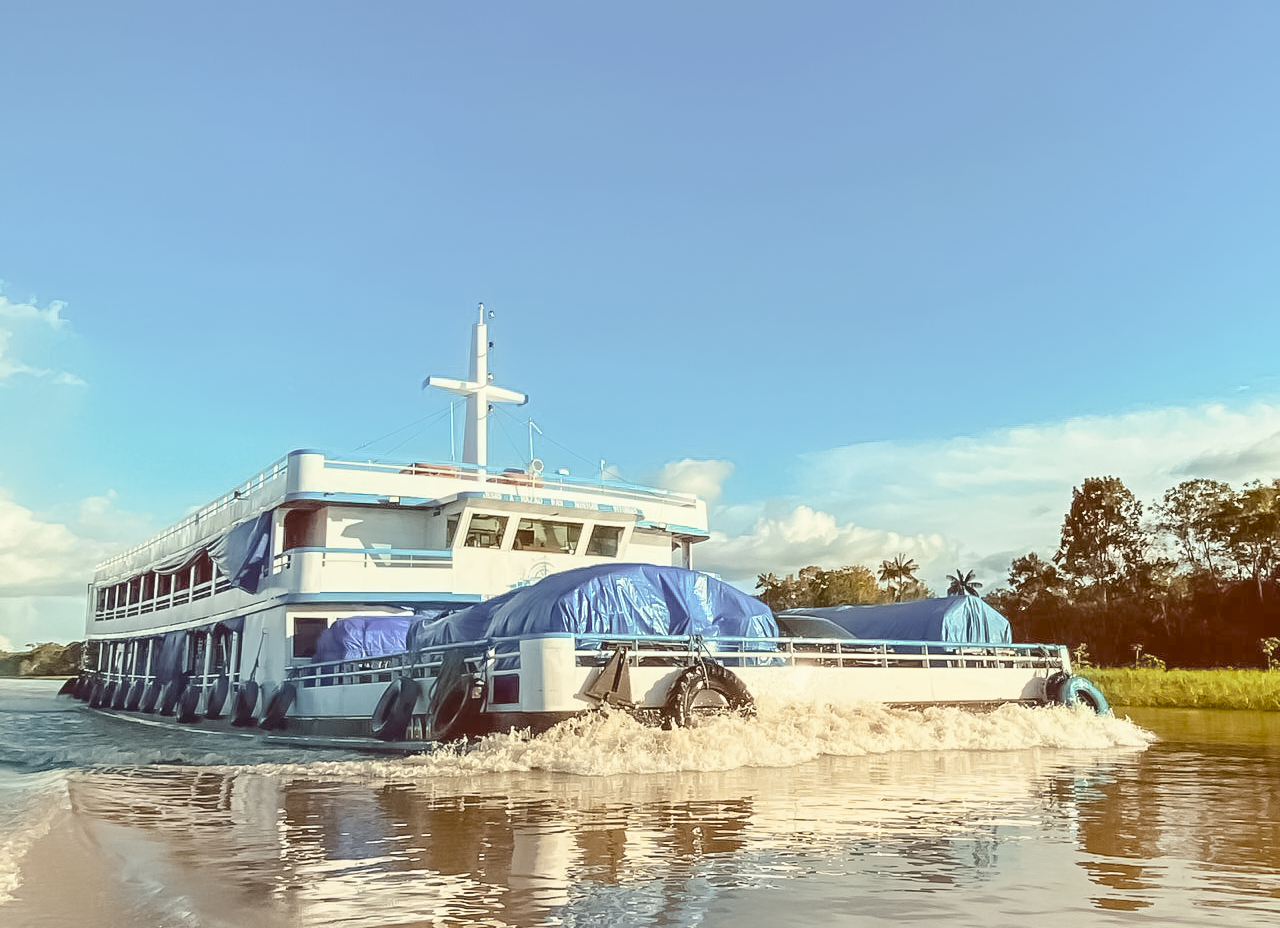Founded 2019
Annual revenue $134,000 (2020)
Jobs created
15 direct jobs; 50 vessels registered
Brazilian Amazon market
over 22 million individual trips, 3.4 million tons of cargo
Brazilian river transportation market
90 million individual trips
This article is part of AQ’s special report on sustainable development of the Amazon.
Reliable transportation remains a major hurdle for business in the Amazon — and a barrier between locals and access to education, shopping and jobs. Then there is the world’s largest river network. About 30% of urban communities in the state of Amazonas are accessible only by boat. “Our rivers are our roads,” said Geferson Oliveira, founder of Navegam, an app to connect boat owners and users.
In 2012, OIiveira lost a job for lack of transportation. “I could only reach the town I was supposed to report to by boat, and for days there were none to take me there on time,” he told AQ. The disappointment became a challenge for the systems engineer.
Jorge Alves, a friend who works at the port of Manaus, had developed a system for managing cargo loaded on and off vessels at the busy port. “To this day, many captains – even those with revenues in the millions of reais — still rely on paper and pencil to account for their passenger and cargo traffic,” Oliveira said. Alves’ spreadsheet had already started to change that.
The duo set to work developing a digital application offering vessels a simple tool to manage both cargo and passenger transportation.
The Navegam app allows passengers to book trips, e-commerce companies to plan their shipments and buyers to track purchases. Most importantly, community-based businesses (such as Café Apuí) can use it to lock in transportation costs. “We are now working on a version for individual trips, allowing smaller vessels to sign up,” Oliveira told AQ, adding that they are also ready to expand to other states.
If the opportunity is immense — the Brazilian Amazon’s 12 river basins are home to 24 million people in 773 municipalities — the challenges are just as big. Many vessels operate informally, and several areas lack reliable Internet connections and even electricity.
“We track our boats using a Wi-Fi system we developed ourselves,” said Oliveira, “but there are blind spots out there.” Besides expanding the app, the team is researching solar energy for vessels. “Everyone is concerned with the forest,” said Oliveira, “but the rivers are just as important. We can’t go on spilling fuel in our waters.”




